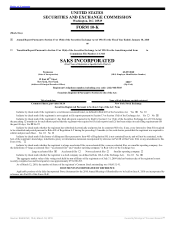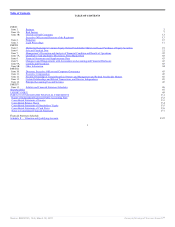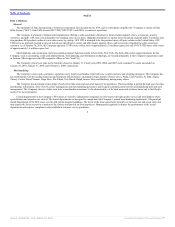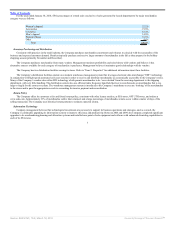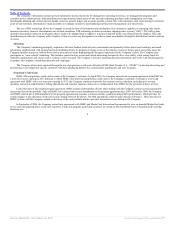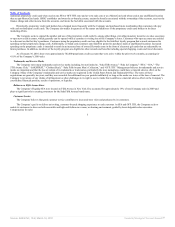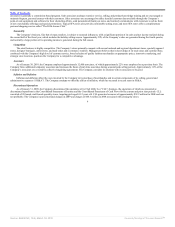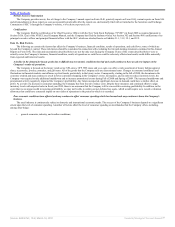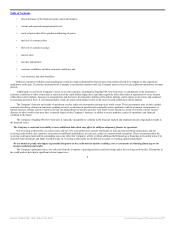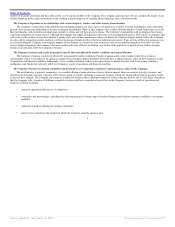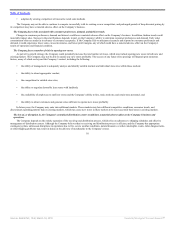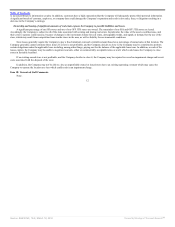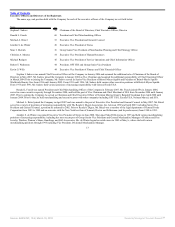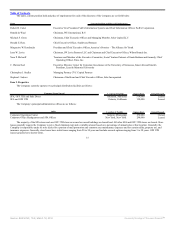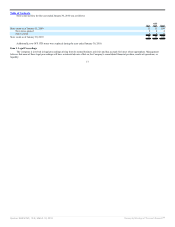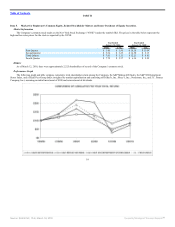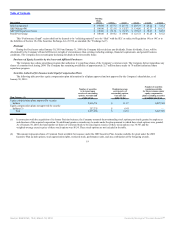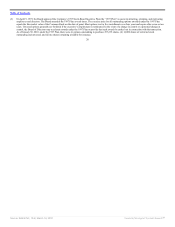Saks Fifth Avenue 2009 Annual Report Download - page 12
Download and view the complete annual report
Please find page 12 of the 2009 Saks Fifth Avenue annual report below. You can navigate through the pages in the report by either clicking on the pages listed below, or by using the keyword search tool below to find specific information within the annual report.
Table of Contents
• adoption by existing competitors of innovative retail sales methods.
The Company may not be able to continue to compete successfully with its existing or new competitors, and prolonged periods of deep discount pricing by
its competitors may have a material adverse effect on the Company’s business.
The Company faces risks associated with consumer preferences, demand, and fashion trends.
Changes in consumer preferences, demand and interest could have a material adverse effect on the Company’s business. In addition, fashion trends could
materially impact sales. Success in the retail business depends, in part, on the Company’s ability to anticipate consumer preferences and demand. Early order
commitments often are made far in advance of consumer acceptance. If the Company fails to anticipate accurately and respond to consumer preferences and
demand, it could experience lower sales, excess inventories, and lower profit margins, any of which could have a material adverse effect on the Company’s
results of operations and financial condition.
The Company faces a number of risks in opening new stores.
As part of its growth strategy, the Company could potentially increase the total number of stores, which may include opening new stores in both new and
existing markets. The Company may not be able to operate any new stores profitably. The success of any future store openings will depend upon numerous
factors, many of which are beyond the Company’s control, including the following:
• the ability of management to adequately analyze and identify suitable markets and individual store sites within those markets;
• the ability to attract appropriate vendors;
• the competition for suitable store sites;
• the ability to negotiate favorable lease terms with landlords;
• the availability of employees to staff new stores and the Company’s ability to hire, train, motivate, and retain store personnel; and
• the ability to attract customers and generate sales sufficient to operate new stores profitably.
In future years, the Company may enter into additional markets. These markets may have different competitive conditions, consumer trends, and
discretionary spending patterns than its existing markets, which may cause new stores in these markets to be less successful than stores in existing markets.
The loss of, or disruption in, the Company’s centralized distribution centers would have a material adverse effect on the Company’s business and
operations.
The Company depends on the orderly operation of the receiving and distribution process, which relies on adherence to shipping schedules and effective
management of distribution centers. Although the Company believes that its receiving and distribution process is efficient, and the Company has appropriate
contingency plans, unforeseen disruptions in operations due to fire, severe weather conditions, natural disasters, or other catastrophic events, labor disagreements,
or other shipping problems may result in delays in the delivery of merchandise to the Company’s stores.
10
Source: SAKS INC, 10-K, March 18, 2010 Powered by Morningstar® Document Research℠


